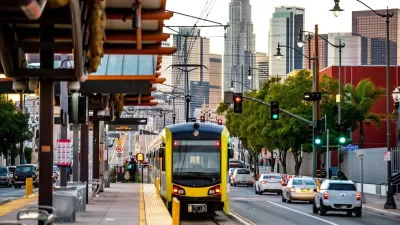Fears that low gas prices and increasing vehicle miles traveled would negatively affect transit ridership might have come true in the first half of the year, according to data provided by the American Public Transportation Association.
Progressive Railroading reports: "While total public transit ridership decreased 0.9 percent during the first six months of 2015 compared with the same period last year, heavy-rail ridership rose 0.5 percent, according to the American Public Transportation Association's (APTA) most recent ridership report."
"A total of nine out of 15 heavy-rail systems reported increases. Cities logging rail ridership increases included San Francisco, up 4.3 percent; Atlanta, up 3.1 percent; and Jersey City, N.J., up 2.1 percent," adds the post.
APTA President and Chief Executive Officer Michael Melaniphy provides a soundbite in the post, speculating that some of the 50 million fewer rides in the first half of 2015 might be because people have returned to driving as gas prices have dropped.
Astute Planetizen readers will recall the debate that followed 2014's report on transit ridership from the APTA, which claimed record levels of transit ridership.
FULL STORY: APTA: 5.3 billion transit trips in first half of 2015; 71 percent of transit ballot initiatives pass

Study: Maui’s Plan to Convert Vacation Rentals to Long-Term Housing Could Cause Nearly $1 Billion Economic Loss
The plan would reduce visitor accommodation by 25,% resulting in 1,900 jobs lost.

North Texas Transit Leaders Tout Benefits of TOD for Growing Region
At a summit focused on transit-oriented development, policymakers discussed how North Texas’ expanded light rail system can serve as a tool for economic growth.

Why Should We Subsidize Public Transportation?
Many public transit agencies face financial stress due to rising costs, declining fare revenue, and declining subsidies. Transit advocates must provide a strong business case for increasing public transit funding.

How to Make US Trains Faster
Changes to boarding platforms and a switch to electric trains could improve U.S. passenger rail service without the added cost of high-speed rail.

Columbia’s Revitalized ‘Loop’ Is a Hub for Local Entrepreneurs
A focus on small businesses is helping a commercial corridor in Columbia, Missouri thrive.

Invasive Insect Threatens Minnesota’s Ash Forests
The Emerald Ash Borer is a rapidly spreading invasive pest threatening Minnesota’s ash trees, and homeowners are encouraged to plant diverse replacement species, avoid moving ash firewood, and monitor for signs of infestation.
Urban Design for Planners 1: Software Tools
This six-course series explores essential urban design concepts using open source software and equips planners with the tools they need to participate fully in the urban design process.
Planning for Universal Design
Learn the tools for implementing Universal Design in planning regulations.
City of Santa Clarita
Ascent Environmental
Institute for Housing and Urban Development Studies (IHS)
City of Grandview
Harvard GSD Executive Education
Toledo-Lucas County Plan Commissions
Salt Lake City
NYU Wagner Graduate School of Public Service




























